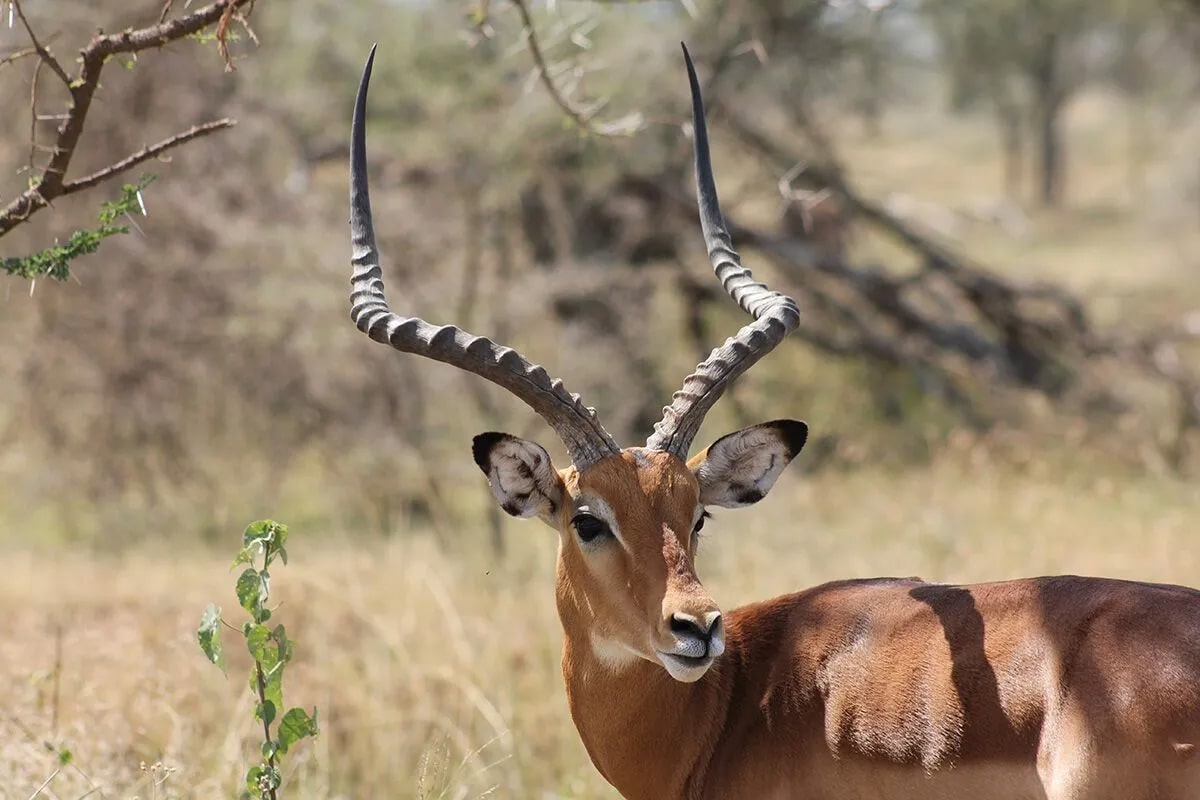
28 interesting facts about antelopes
- 👁️ 300
Antelopes are among the most fascinating and diverse creatures that roam the savannas, grasslands, and forests of the world, particularly in Africa and parts of Asia. Known for their graceful appearance and swift running capabilities, antelopes encompass a variety of species, each with its unique traits and adaptations that enable them to thrive in their respective habitats. From the towering eland to the diminutive royal antelope, these mammals play crucial roles in their ecosystems, serving as prey for predators and as grazers that influence the vegetation. Here are 28 interesting and informative facts about antelopes that highlight their diversity, behavior, and conservation status.
- Antelopes belong to the Bovidae family, which also includes cattle, goats, and sheep.
- There are approximately 91 species of antelopes, most of which are native to Africa.
- The term “antelope” is used informally rather than being a scientific classification, grouping together species that are not necessarily closely related.
- Antelopes vary greatly in size; the royal antelope, the smallest, stands about 25 cm (10 inches) tall at the shoulder, while the eland, the largest, can exceed 1.8 meters (5.9 feet).
- Some antelope species, such as the impala, can leap distances of up to 10 meters (33 feet) and heights of up to 3 meters (9.8 feet) to escape predators.
- Antelopes have adapted to a wide range of habitats, from dense forests to arid deserts.
- The saiga antelope, found in Central Asia, has an unusual oversized nose that acts as a filter, warming up cold air in the winter and filtering out dust in the summer.
- The gemsbok can survive in desert conditions without water for long periods, obtaining moisture from the food it eats.
- The fastest antelope, the Thomson’s gazelle, can reach speeds of up to 80 km/h (50 mph).
- Antelopes have different social structures; some species are solitary, while others live in herds that can number in the thousands.
- Male antelopes are generally called bucks, females are does, and the young are referred to as calves.
- The horns of antelopes, which can be straight or spiraled, are made of keratin, the same material as human fingernails.
- In some species, both males and females have horns, while in others, only the males are horned.
- The gerenuk, also known as the giraffe gazelle, can stand on its hind legs to reach higher branches, a unique behavior among antelopes.
- Antelopes play a significant role in their ecosystems as prey for large carnivores such as lions, cheetahs, and hyenas.
- The blackbuck antelope, native to India and Nepal, is known for its distinctive spiral horns and pronounced sexual dimorphism.
- Many antelope species are migratory, undertaking long-distance journeys in search of grazing pastures.
- The African antelope species known as the wildebeest or gnu undertakes one of the world’s most famous wildlife migrations across the Serengeti.
- Antelopes communicate using a variety of sounds, body language, and even scent markings.
- The dik-dik, one of the smallest antelope species, marks its territory with tears.
- Several antelope species are endangered due to habitat loss, hunting, and poaching.
- The addax, also known as the screwhorn antelope, is critically endangered, with wild populations found in the Sahara Desert.
- Antelope horns have been used by humans for various purposes, including as musical instruments and traditional medicine.
- Some antelope species, such as the bongo, are nocturnal, while others are more active during the day.
- The sable antelope is known for its striking black coat in males and impressive curved horns.
- Antelopes have specialized teeth for grazing and browsing, depending on their diet.
- The IUCN Red List provides conservation statuses for antelope species, ranging from least concern to critically endangered.
- Conservation efforts for antelopes include habitat restoration, anti-poaching measures, and breeding programs.
Antelopes are a testament to the beauty and complexity of the natural world, showcasing an incredible range of adaptations that allow them to survive and flourish. Their grace, speed, and resilience make them emblematic of the wild landscapes they inhabit. As efforts continue to protect and conserve these remarkable creatures, their continued existence reminds us of the importance of biodiversity and the interconnectedness of ecosystems. The story of antelopes is one of survival, diversity, and the enduring fascination they hold for people around the globe.
Antelopes are among the most fascinating and diverse creatures that roam the savannas, grasslands, and forests of the world, particularly in Africa and parts of Asia. Known for their graceful appearance and swift running capabilities, antelopes encompass a variety of species, each with its unique traits and adaptations that enable…